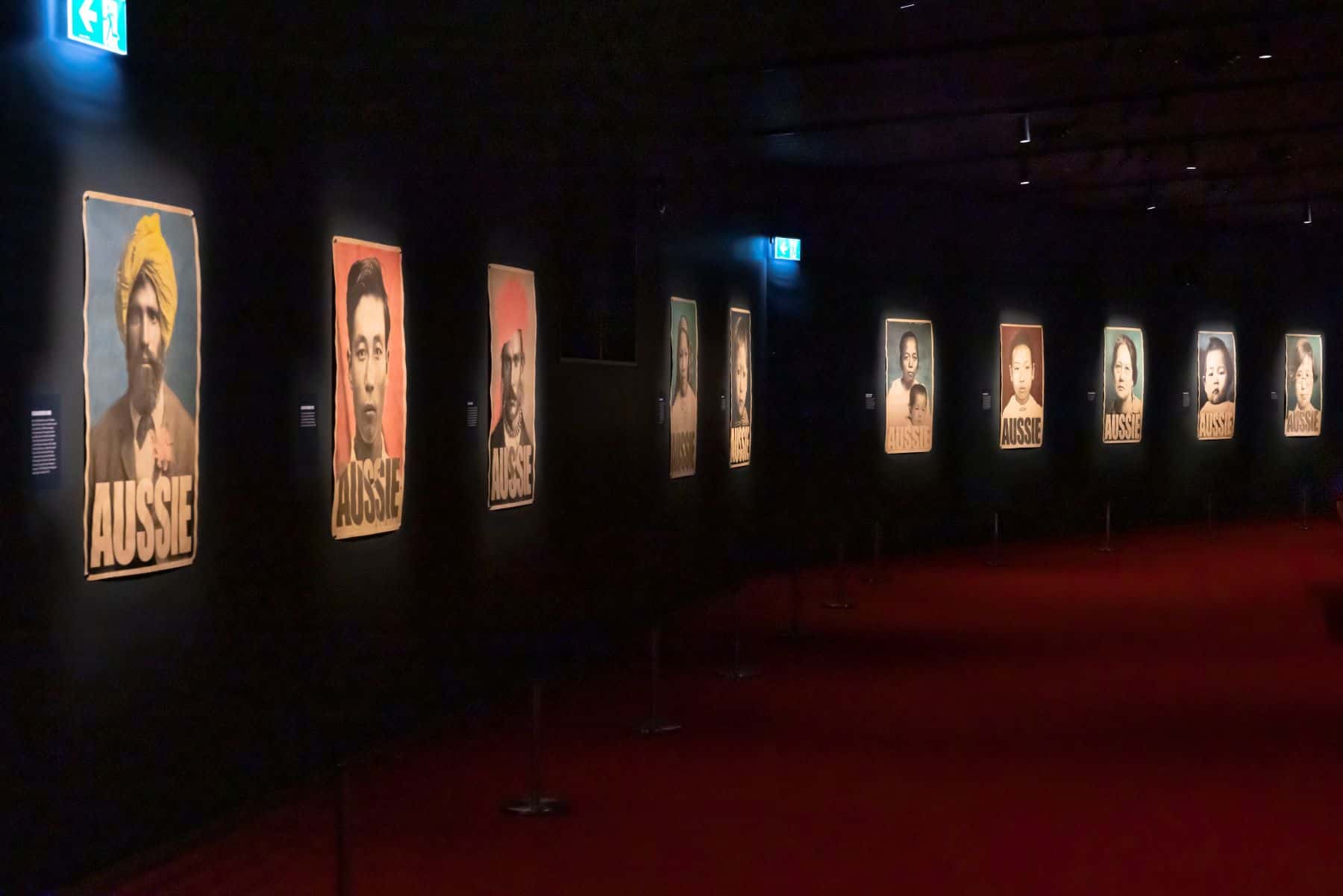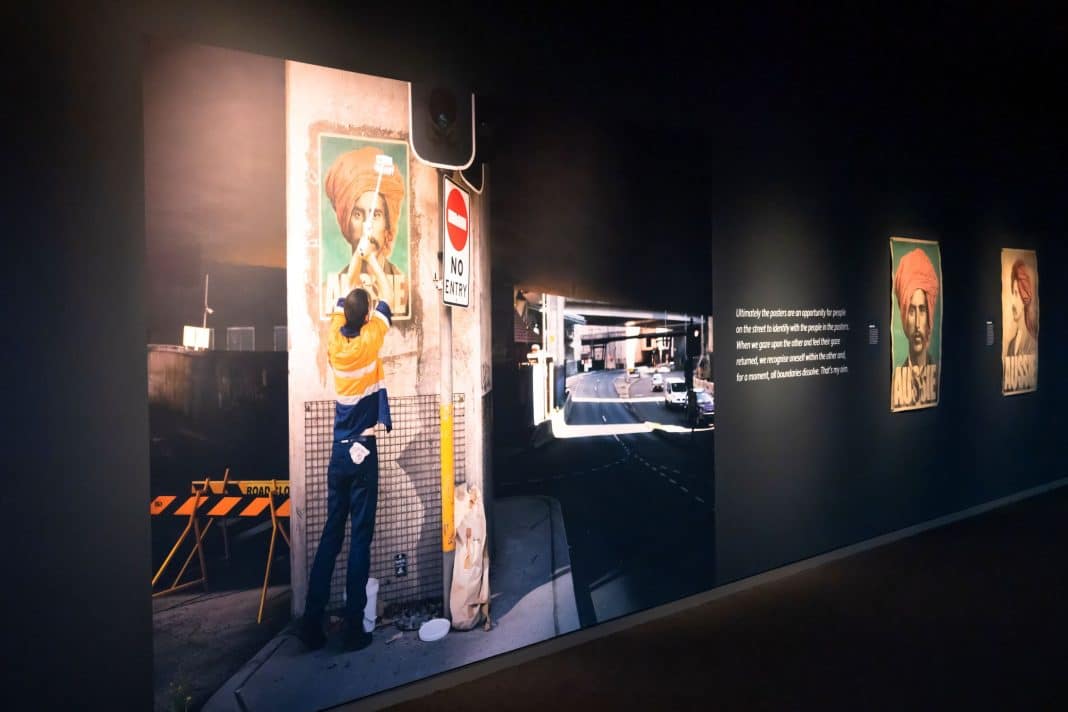Hitting the sides of buildings and streetways across the country in 2016, artist Peter Drew challenged people to reflect on their perception of what an Australian looked like. Now the works have made their way inside one of the country’s leading institutions with Aussie: Posters on display at the National Museum of Australia until 27 August.
Created using images from the National Archives of Australia, Drew sorted through the images taken during the Commonwealth Immigration Restriction Act, better known as the White Australia Policy. The people in the images were either long settled in Australia or born here; when wanting to travel overseas they applied for an exemption from the dictation test on re-entry to Australia.
“People would be asked to complete this dictation test; it could be given to them in any language, and it could be given to them any number of times. Say they passed the test in English, it could be given to them again in Hungarian … I just think that’s an amazing point of history because it shows how cowardly these people were,” says Drew.
The provocative images take photos of men, women, and children as they were saved on their applications and enlarges them to poster size; Drew then overlays with details of colour and the word ‘Aussie’. The artist first started spreading the posters during a wave of xenophobia, particularly anti-Islamic sentiments while the Reclaim Australia movement was making itself known through various protests and media coverage. Wanting to broaden the discussion of who is an ‘Aussie’, Drew chose street art, something that demands attention, as his medium.
“What these photographs show is how diverse Australia was at the time the Immigration Act was implemented … It’s kind of an ironic twist that because we had this racist policy, we now have this fantastic photographic record,” says Drew.
Personally gluing the posters around the country, Drew tries to choose places that wouldn’t upset building owners, occasionally opting to stick one up in a deliberately provocative place. The act itself has become an important part of the works.
“It becomes a bit of a spectacle of the physical feat of one person sticking them all up. If you see a poster up on the street, you know that I was there personally.”

Struck by how heroic his first subject, Monga Khan, looked, Drew didn’t want the works to bring feelings of sympathy. He wanted people to see the image of the proud Muslim man and identify with him and his strength.
“Since then, I’ve found and used images that are more melancholy and say something else, but at the start I really wanted it to be strength-based,” he explains.
As he continued researching the indefinite project, one of the factors that made him broaden his scope was the fact that young children were subjected to the dictation test. Deciding to include more people’s stories, he searched for those who might have seemed more vulnerable and fearful of being exiled from the only country they have ever known. He also wanted to include those that he felt showed disdain for their situation, like Jane Mary Low Chow, who applied for exemption in 1927.
“She was born in Queensland, and she applied for exemption, I think she was about 47 at the time and the expression in her face is one of sort disbelief but also scorn. Here’s this person who has lived 47 years in Australia but she has to have this photograph taken so she won’t be racially excluded upon returning home. An image like that captures the bitterness in her face,” he says.
The project was one of personal introspection as well. Drew says he is just as capable of prejudice as anyone else; more than anything, it is a flaw of the human condition. He says 100 years is not that long ago, and now trying to bring in such a policy would cause uproar; while there is progress, we have more to improve on.
“I realistically think it’d be the end of that political party if they did that today. It would be seen as absurd for what it is, as absurd. It is baffling really if you really think about it,” says Drew.
Reflect on what it means to be Australian in Aussie: Posters at the National Museum of Australia until 27 August; nma.gov.au
Canberra Daily would love to hear from you about a story idea in the Canberra and surrounding region. Click here to submit a news tip.



